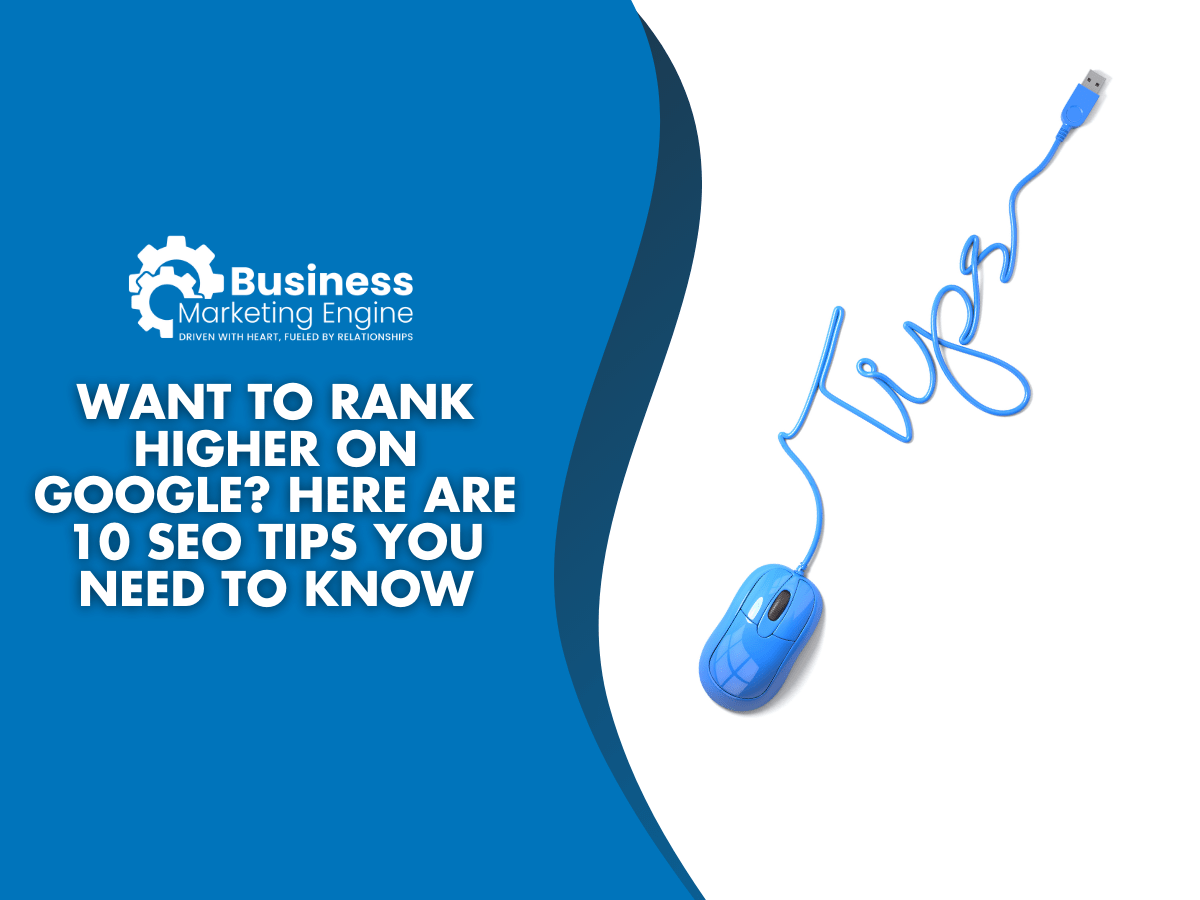At one point or another, you’ve been in the market for a new product, solution or service whether it was last week, today, or even right in this very moment.
And what do you, like most people do in that situation?
Google search it.
In those short moments after you hit “enter,” you scan the Google search results page (SERP); which link are you most likely to click?
The links that are at the top, of course.
As a business owner, your digital marketing strategy is nothing without organic traffic. This is why SEO writing is essential to ranking high and mighty on the SERP.
There’s a lot to know and master when it comes to SEO optimization. That’s why in this article, we’ll go over the ten golden rules of SEO writing that you can start implementing today to see better results tomorrow.
What is SEO Writing?
SEO (Search Engine Optimization) is the practice of optimizing a website for Google search to earn higher web traffic levels and improve the visibility of the site.
It’s a combination of art and science as it requires both creative and technical skills. The goal of SEO writing is to create content that is both informative and keyword-rich so that it will rank high on SERPs.
Good SEO writing is key to getting your site noticed by Google. It’s important to use relevant keywords throughout your content so that Google can understand what your site is about. You should also try to earn backlinks from high-quality websites.
SEO content can greatly improve your website’s visibility and attract more visitors. If you’re not sure how to get started, Business Marketing Engine can help!
We help businesses create effective SEO content so they can get found online. Our services include web page optimization, blog writing and more. We also offer customized packages for businesses of all sizes.
Contact us today to get started!
Interesting SEO Facts and Stats for 2022
Not yet sold on SEO? Here are some significant facts and stats that show just how important SEO can be for your business.
- A search engine is where 68 percent of online experiences begin.
- Google (+ Google Images) has 91.94 percent of the total search engine market share, followed by Bing, Yahoo!, YANDEX, Baidu and others.
- SEO and organic traffic generate more leads than any other marketing strategy, according to 61 percent of B2B marketers.
- Even if the purchase is made in a store, 63 percent of all shopping begins online.
- 70 percent of online marketers say SEO is a better way to generate sales than PPC.
- The average click-through rate for the first page of a Google search is 32 percent.
- 75 percent of people never go beyond the first page of search results.
As you can see, SEO is essential to not only generate sales and traffic online but to be found by anyone at all.
10 SEO Writing Rules That Will Rank Your Content Higher
Now that you have a better understanding of SEO and why it’s vital to the health and wealth of your business, it’s time to start writing!
But before you do, here are some SEO best practices you should keep in mind so your content is adequately optimized for search engines.
 Create Content for Humans
Create Content for Humans
The first rule of creating extraordinary SEO writing may sound obvious, but you’d be surprised how many businesses fail to follow it: Write for humans, not search engines.
If you want your website or blog to rank higher in search engine results pages, and attract more organic traffic overall, then you need to start by creating good content that’s truly valuable and worth reading.
That means writing with your audience’s needs and interests in mind, rather than trying to stuff as many keywords into your content writing as possible.
Not only will this make for a better user experience, but it will also help you avoid getting penalized by Google for keyword stuffing.
Test and Optimize Your Headlines
The next thing you want to do is make sure that you are using the proper keywords in your headlines.
Incorporating this into your SEO writing will help ensure your content is ranked higher in the search engines. By including keywords that are relevant to your topic, you will be more likely to attract readers who are looking for what you have to offer.
In addition to using relevant keywords, you also want to make sure that your headlines are compelling and attention-grabbing. After all, if no one clicks on your article, it doesn’t matter how high it is ranked in Google’s search results.
To write headlines that’ll get clicks, try using numbers or interesting adjectives. And, of course, make sure that your headline accurately reflects the content of your article.
Use H1, H2, H3, and H4 Header Tags Strategically
They may just seem like headers to you, but H1, H2, H3, and H4 header tags are important elements in your content if you want it to rank higher in search engine results pages (SERPs).
Think of them as the titles and subtitles of your content. Just as you would use headings and subheadings in a traditional print article or book, you should use them on your website to help Google understand what your content is about and how it is structured.
Header tags also give your readers an easy way to scan through your content to find the information they are looking for. So not only will using header tags improve your SEO, but it will also make your content more user-friendly.
The Meta Description Should Include Your Focus Keyword
Another SEO writing rule is to include your focus keyword in the meta description. This will help Google better understand what your page is about and index it accordingly.
By including your focus keyword in the meta description, you are also increasing the chances that your page will show up on Google’s first page when someone searches for that keyword.
Not only that, but when people see your page title and meta description in the search results, you want them to be able to quickly understand what your page is about and why it’s relevant to their search. More often than not, it’s what determined whether they decide to click through to your page or not.
Add Alt Text to Your Images
To leverage your chances of ranking higher on Google even more, try including alt-text with all of your website’s images.
Alt-text is a short description of an image that is displayed in place of the image if it can’t be rendered for some reason.
It’s also used by Google and other search engines to determine what an image is about, which can help your website rank higher when people search for keywords related to the alt-text.
Including alt text with your images can help improve your content’s SEO and make it more accessible to everyone.
When writing your alt text, be sure to include keywords that are relevant to the image and the overall topic of your article. Doing so will help improve your content’s searchability and make it more likely to show up in Google search results.
 Master Your Keyword Research
Master Your Keyword Research
The only way to really know if your keywords will help you rank higher is by doing keyword research. This is the process of finding and analyzing the words and phrases that people are using to search for content like yours.
There are a few different ways to do keyword research, but the best way is to use a tool like Google Keyword Planner. This tool lets you see how many people are searching for specific keywords, as well as how much competition there is for those keywords.
The more popular the keyword, the more likely it is that you’ll be able to rank for it. But if there’s a lot of competition, it might be tough to rank for that keyword. So you need to find the right balance of popularity and competition when you’re choosing keywords for your SEO writing.
Write Longer But Scannable Content
People aren’t reading full articles anymore, they’re scanning them. So how do you make sure your content is being seen and ranked by Google? Write longer but scannable content.
This SEO writing rule might seem counterintuitive — after all, if people aren’t reading full articles, why bother writing long ones? But hear us out.
When you write longer articles, you give Google more opportunities to rank your content. That’s because each article should be packed with relevant keywords, and the more keywords you include, the more likely Google is to see them and rank your article accordingly.
Of course, this doesn’t mean that you should stuff your article full block of text. Instead, break up your content into manageable chunks with headlines, subheadings, and bullet points. This will make your articles easier to read — and more likely to be ranked by Google.
Utilize LSI Keywords
LSI keywords are a collection of words and phrases that are closely related to your main keyword. For example, if you’re writing an article about SEO tips, some LSI keywords could be “SEO strategy”, “SEO approach”, “best SEO practices”, etc.
Utilizing LSI keywords in your content is important for two main reasons:
- It helps search engines better understand the topic of your article and match it with relevant searches: This is because LSI keywords are essentially like mini-keywords that further explain the main topic of your article.
- It helps improve your article’s click-through rate: LSI keywords make your title and meta description more relevant to what people are actually searching for by adding extra detail and context. This, in turn, helps you attract more clicks from organic search.
Add Internal Links
Internal links provide a great way to improve the user experience of your website, and they can also be a valuable SEO writing tool.
By linking to other pages on your site, you can help search engines understand the structure and hierarchy of your site, which can be helpful when it comes to ranking your content.
In addition, internal links can help to increase the PageRank of the pages you link to, which can further improve your site’s SEO. Your readers can also easily access related content on your site, which can keep them engaged and reduce your bounce rate.
Avoid Keyword Cannibalization
If you furrowed your brows at this one, we promise it’s not what it sounds like. Cannibalization occurs when you have two pieces of content on your website that are competing for the same keyword.
So, if you have a page about SEO writing tips and another page about SEO writing guidelines, both pages are fighting for ranking in search engines for the term “SEO writing.”
There are a few reasons why this is bad for business:
- It hurts your chances of ranking in search engines. If you have two pages competing for the same keyword, Google doesn’t know which one to rank higher. This can result in neither page ranking as high as it could, or even worse — both pages being pushed down in rankings.
- It’s confusing for users. When users search for “SEO writing,” they might land on one of your pages, but not the other. If the page they land on doesn’t have the information they’re looking for, they’ll likely just leave and go to a different website.
- It wastes your time and resources. Creating two (or more) pieces of content that are essentially competing against each other is a waste of time and money. You could be spending that time and money on creating other, more effective content.
Drive More Traffic To Your Website
SEO writing is one of the most important aspects of any business’s online marketing strategy. It helps you to rank higher in search engine results pages, driving more traffic to your website.
However, the process can be quite time-consuming and energy-intensive.
That’s where we come in.
At Business Marketing Engine, we have a team of experienced writers who know how to create high-quality content that will help your business thrive online.
Contact us today to learn more about our services and how we can help you achieve success with SEO writing.

 Create Content for Humans
Create Content for Humans Master Your Keyword Research
Master Your Keyword Research


